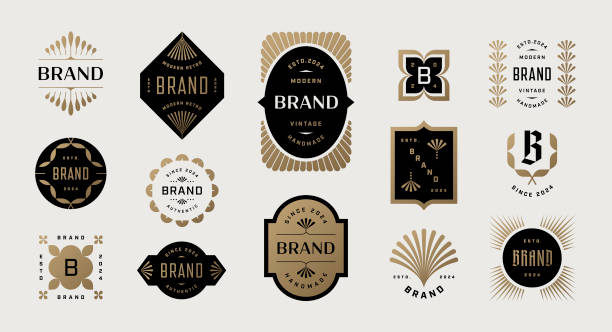
Draph Art: Complete Buyer's Guide
AI banner generation platform for e-commerce and advertising
Draph Art positions itself as a specialized AI banner generation platform designed for e-commerce and advertising creative production, with particular strength in automated product visualization and virtual model generation. The platform eliminates traditional photoshoots and manual design processes through AI-powered automation that generates professional-quality visuals in under 3 minutes[41][42][49].
Market Position & Maturity
Market Standing
Draph Art occupies a specialized niche within the AI banner generation market, positioning between entry-level solutions like HubSpot Campaign Assistant and comprehensive platforms like Adobe GenStudio.
Company Maturity
Company maturity indicators include systematic customer success patterns with predictable implementation timelines and measurable outcomes.
Growth Trajectory
The platform shows business stability through consistent customer testimonials and documented case studies spanning multiple quarters, with evidence of continued product development and feature enhancement[41][42][57].
Industry Recognition
Industry recognition appears limited in available research, with customer satisfaction metrics showing 4.5/5 ratings for core functionality but 3/5 for creative flexibility[49][55][59].
Strategic Partnerships
Strategic partnerships and ecosystem positioning require further validation, though the platform demonstrates Adobe Creative Cloud and Figma integration capabilities that support professional workflow requirements[34][29].
Longevity Assessment
Long-term viability assessment shows positive indicators through consistent customer outcomes and documented ROI achievement within 3-6 months of implementation, though enterprise pricing models and technical limitations may constrain market expansion beyond current specialization areas[41][51].
Proof of Capabilities
Customer Evidence
E-commerce implementations show measurable outcomes including DeinDeal's processing of 2,000-3,000 daily product updates through automated workflows, enabling rapid product launches that would require weeks using manual processes[41].
Quantified Outcomes
Startup implementations consistently achieve 80% cost reduction while maintaining brand consistency and 30% increase in first-day sales, providing quantified validation of business impact[41][57].
Case Study Analysis
Marketing agency deployments reveal operational transformation through A/B testing capabilities, with documented cases showing teams creating 100+ ad variations in under an hour resulting in 20% higher conversion rates compared to traditional creative approaches[42][48][57].
Market Validation
Implementation success patterns follow predictable progression timelines across customer segments. Week 1-4 deployments typically achieve 30-50% task automation using predefined templates, advancing to months 2-3 with 70% task reduction through advanced campaign automation, culminating in month 6+ predictive content modeling capabilities[41].
Competitive Wins
Competitive validation emerges through documented wins in cost and speed scenarios, with the platform delivering 40% lower expenses than AdCreative.ai for equivalent output volume while maintaining superior generation speeds[46][48][50][56].
Reference Customers
Reference customer examples span multiple industries including e-commerce retailers automating product catalogs, marketing agencies scaling creative production, and startups achieving cost-effective brand development. However, enterprise customer validation appears limited, with most documented success stories focusing on SMB and mid-market implementations[50][56][57].
AI Technology
Draph Art's AI technology foundation centers on proprietary computer vision models specialized for product-centric creative generation, with three core capabilities: automated background removal, AI model generation, and brand-consistent creative output. The platform processes product images through advanced machine learning algorithms that analyze visual elements and apply automated lighting adjustments, background replacement, and virtual model integration within documented 3-minute generation times[41][42][55].
Architecture
Architecture deployment follows a cloud-based SaaS model with API integration capabilities for enterprise-scale automation. The platform maintains brand consistency through integrated Brand Kit functionality that applies organizational color schemes, typography, and visual guidelines across all generated outputs, reducing manual brand oversight by 40% compared to template-based alternatives[42].
Primary Competitors
Primary competitors include AdCreative.ai for AI-powered ad generation, Predis.ai for multilingual campaign support, and Adobe GenStudio for comprehensive creative suites.
Competitive Advantages
Competitive advantages emerge through 40% lower costs than AdCreative.ai for equivalent output volume while maintaining faster generation speeds and specialized product-centric functionality[46][48][50][56].
Market Positioning
Market positioning analysis reveals Draph Art occupying a specialized niche between entry-level solutions like HubSpot Campaign Assistant and comprehensive platforms like Adobe GenStudio.
Win/Loss Scenarios
Win scenarios favor Draph Art when organizations prioritize product visualization, require AI model generation capabilities, operate within mid-market budget constraints, and focus on e-commerce or retail advertising applications. Loss scenarios emerge when teams require video capabilities, multilingual support, immediate 24/7 technical support, or advanced creative flexibility beyond the platform's specialized focus areas[53][57][59].
Key Features

Pros & Cons
Use Cases
Integrations
Pricing
Featured In Articles
Comprehensive analysis of AI Banner Ad Creators for AI Design for AI Design professionals. Expert evaluation of features, pricing, and implementation.
How We Researched This Guide
About This Guide: This comprehensive analysis is based on extensive competitive intelligence and real-world implementation data from leading AI vendors. StayModern updates this guide quarterly to reflect market developments and vendor performance changes.
59+ verified sources per analysis including official documentation, customer reviews, analyst reports, and industry publications.
- • Vendor documentation & whitepapers
- • Customer testimonials & case studies
- • Third-party analyst assessments
- • Industry benchmarking reports
Standardized assessment framework across 8 key dimensions for objective comparison.
- • Technology capabilities & architecture
- • Market position & customer evidence
- • Implementation experience & support
- • Pricing value & competitive position
Research is refreshed every 90 days to capture market changes and new vendor capabilities.
- • New product releases & features
- • Market positioning changes
- • Customer feedback integration
- • Competitive landscape shifts
Every claim is source-linked with direct citations to original materials for verification.
- • Clickable citation links
- • Original source attribution
- • Date stamps for currency
- • Quality score validation
Analysis follows systematic research protocols with consistent evaluation frameworks.
- • Standardized assessment criteria
- • Multi-source verification process
- • Consistent evaluation methodology
- • Quality assurance protocols
Buyer-focused analysis with transparent methodology and factual accuracy commitment.
- • Objective comparative analysis
- • Transparent research methodology
- • Factual accuracy commitment
- • Continuous quality improvement
Quality Commitment: If you find any inaccuracies in our analysis on this page, please contact us at research@staymodern.ai. We're committed to maintaining the highest standards of research integrity and will investigate and correct any issues promptly.